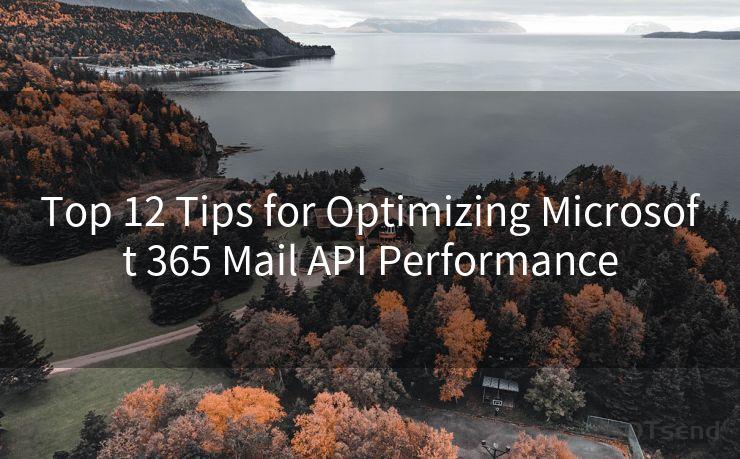Top 12 Tips for Optimizing Microsoft 365 Mail API Performance




When integrating with the Microsoft 365 Mail API, optimizing performance is crucial for a smooth and efficient user experience. Here are the top 12 tips to help you maximize the performance of your integration.
1. Understand the API Limits
Before you start, familiarize yourself with the Microsoft 365 Mail API rate limits. Exceeding these limits can lead to throttling, which can significantly impact performance. Plan your requests accordingly to avoid hitting these limits.
2. Use Batching
The Microsoft 365 Mail API supports batching, allowing you to combine multiple requests into a single HTTP call. This reduces network latency and overhead, significantly improving performance.
3. Leverage Delta Queries
Utilize delta queries to efficiently synchronize changes in mailboxes. This feature allows you to retrieve only the changes that have occurred since your last synchronization, reducing unnecessary data transfer.
4. Optimize Pagination
When dealing with large datasets, use pagination to retrieve data in smaller chunks. This prevents memory overloads and keeps the application responsive.
5. Minimize Redundant Requests
Cache frequently accessed data locally to minimize redundant API requests. This not only improves performance but also reduces the chance of hitting rate limits.
6. Handle Errors Gracefully
Implement robust error handling mechanisms to manage API failures gracefully. Use exponential backoff strategies to avoid overwhelming the server with repeated failed requests.
7. Monitor and Adjust
Regularly monitor your API usage and adjust your request patterns accordingly. Use the insights gained from monitoring to fine-tune your integration for optimal performance.
8. Utilize the Microsoft Graph SDK
Consider using the Microsoft Graph SDK, which provides built-in optimizations and simplifies many common tasks, improving development efficiency and reducing potential performance bottlenecks.
9. Prioritize Requests
Prioritize your API requests based on user needs. For example, if a user frequently accesses their inbox, prioritize those requests over less frequently accessed data like contacts or calendar events.
10. Implement Caching Strategies
Implement caching strategies, such as ETag caching, to store and reuse previously fetched data. This can significantly reduce the number of API calls needed, improving overall performance.
11. Optimize Data Processing
Optimize your data processing logic to minimize the time it takes to handle and display data retrieved from the API. Efficient data structures and algorithms can make a significant difference in performance.
12. Stay Up to Date
🔔🔔🔔
【AOTsend Email API】:AOTsend is a Managed Email Service for sending transactional emails. Support Email Types: reminders, authentication, confirmations, notifications, verification codes, invoices, password resets, account activations, billing statements, two-factor authentication (2FA), and one-time passwords (OTP) emails, etc. $0.28 per 1000 Emails. 99% Delivery, 98% Inbox Rate.
You might be interested in:
Why did we start the AOTsend project, Brand Story?
What is a Managed Email API, How it Works?
Best 25+ Email Marketing Platforms (Authority,Keywords&Traffic Comparison)
Best 24+ Email Marketing Service (Price, Pros&Cons Comparison)
Email APIs vs SMTP: How they Works, Any Difference?
Keep up to date with the latest Microsoft 365 Mail API updates and best practices. Microsoft continuously improves its APIs, and staying informed ensures you can benefit from these improvements.

By following these Top 12 Tips for Optimizing Microsoft 365 Mail API Performance, you can ensure a smooth and efficient integration that provides a seamless user experience. Remember to regularly monitor and adjust your implementation to maintain optimal performance.




Scan the QR code to access on your mobile device.
Copyright notice: This article is published by AotSend. Reproduction requires attribution.
Article Link:https://www.mailwot.com/p2633.html



